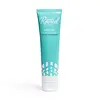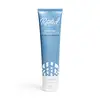What's inside
What's inside
 Key Ingredients
Key Ingredients

 Benefits
Benefits

 Concerns
Concerns

 Ingredients Side-by-side
Ingredients Side-by-side

Water
Skin ConditioningAloe Barbadensis Leaf Juice
Skin ConditioningGlycerin
HumectantCocamidopropyl Hydroxysultaine
CleansingSodium Lauroyl Methyl Isethionate
CleansingCaprylyl/Capryl Glucoside
CleansingGlyceryl Stearate Se 1%
EmulsifyingDecyl Glucoside
CleansingBenzyl Alcohol
PerfumingGuar Hydroxypropyltrimonium Chloride
Skin ConditioningPotassium Sorbate
PreservativeCitric Acid
BufferingCetyl Hydroxyethylcellulose
Emulsion StabilisingCitrus Aurantium Bergamia Fruit Oil
MaskingSodium Phytate
Dehydroacetic Acid
PreservativeHelianthus Annuus Seed Oil
EmollientChamomilla Recutita Flower Extract
MaskingAlthaea Officinalis Root Extract
Skin ConditioningArctium Lappa Root Extract
Skin ConditioningAngelica Archangelica Root Extract
MaskingGlycyrrhiza Glabra Root Extract
BleachingPanax Ginseng Root Extract
EmollientYucca Filamentosa Root Extract
Zingiber Officinale Root Extract
MaskingCamellia Sinensis Leaf Extract
AntimicrobialWater, Aloe Barbadensis Leaf Juice, Glycerin, Cocamidopropyl Hydroxysultaine, Sodium Lauroyl Methyl Isethionate, Caprylyl/Capryl Glucoside, Glyceryl Stearate Se 1%, Decyl Glucoside, Benzyl Alcohol, Guar Hydroxypropyltrimonium Chloride, Potassium Sorbate, Citric Acid, Cetyl Hydroxyethylcellulose, Citrus Aurantium Bergamia Fruit Oil, Sodium Phytate, Dehydroacetic Acid, Helianthus Annuus Seed Oil, Chamomilla Recutita Flower Extract, Althaea Officinalis Root Extract, Arctium Lappa Root Extract, Angelica Archangelica Root Extract, Glycyrrhiza Glabra Root Extract, Panax Ginseng Root Extract, Yucca Filamentosa Root Extract, Zingiber Officinale Root Extract, Camellia Sinensis Leaf Extract
Water
Skin ConditioningGlycerin
HumectantDecyl Glucoside
CleansingCaprylyl/Capryl Glucoside
CleansingXanthan Gum
EmulsifyingSodium Benzoate
MaskingPanthenol
Skin ConditioningPotassium Sorbate
PreservativeCaprylic/Capric Triglyceride
MaskingCitrus Aurantium Dulcis Peel Extract
Emulsion StabilisingCitrus Limon Peel Extract
EmollientLavandula Angustifolia Flower Extract
CleansingVanilla Planifolia Fruit Extract
Skin ConditioningCitrus Grandis Extract
AntimicrobialMentha Piperita Leaf Extract
Skin ConditioningMentha Viridis Extract
MaskingCitric Acid
BufferingAlthaea Officinalis Root Extract
Skin ConditioningArctium Lappa Root Extract
Skin ConditioningYucca Filamentosa Root Extract
Zingiber Officinale Root Extract
MaskingPanax Ginseng Root Extract
EmollientGlycyrrhiza Glabra Root Extract
BleachingAngelica Archangelica Root Extract
MaskingCalendula Officinalis Flower Extract
MaskingCamellia Sinensis Leaf Extract
AntimicrobialWater, Glycerin, Decyl Glucoside, Caprylyl/Capryl Glucoside, Xanthan Gum, Sodium Benzoate, Panthenol, Potassium Sorbate, Caprylic/Capric Triglyceride, Citrus Aurantium Dulcis Peel Extract, Citrus Limon Peel Extract, Lavandula Angustifolia Flower Extract, Vanilla Planifolia Fruit Extract, Citrus Grandis Extract, Mentha Piperita Leaf Extract, Mentha Viridis Extract, Citric Acid, Althaea Officinalis Root Extract, Arctium Lappa Root Extract, Yucca Filamentosa Root Extract, Zingiber Officinale Root Extract, Panax Ginseng Root Extract, Glycyrrhiza Glabra Root Extract, Angelica Archangelica Root Extract, Calendula Officinalis Flower Extract, Camellia Sinensis Leaf Extract
Ingredients Explained
These ingredients are found in both products.
Ingredients higher up in an ingredient list are typically present in a larger amount.
Althaea Officinalis Root Extract is from a plant called the Marsh Mallow plant. This plant is indigenous to Europe, West Asia, and North Africa.
Marsh Mallow root is an emollient and antioxidant. It helps sooth and soften the skin. When applied to the skin, it blocks enzymes that break down hyaluronic acid.
The marshmallow we eat today is based on an ancient Egyptian dessert made from this plant (Marshmallows do not contain this plant anymore).
Learn more about Althaea Officinalis Root ExtractAngelica Archangelica Root Extract is used to add a fragrance to products. Its scent is described as woody and herbaceous.
Arctium Lappa Root Extract is from the burdock plant. It has antioxidant, anti-inflammatory, and anti-fungal properties.
Camellia Sinensis Leaf Extract is derived from the leaves of the tea plant. Black tea, green tea, and oolong tea are all harvested from this plant.
This ingredient has many skin benefits:
This ingredient contains polyphenols, a strong antioxidant. Antioxidants help fight off molecules that damage skin cells.
On top of that, the antioxidants in green tea neutralize free-radicals from the sun. This gives the skin some extra UV protection, but should not replace sunscreen.
Many components of tea have anti-inflammatory properties.
Polyphenols and L-theanine help soothe the skin and reduce irritation. The caffeine in Camellia Sinensis Leaf Extract helps calm inflamed blood vessels.
Other compounds found in tea include: Vitamin Bs, linoleic acid, magnesium, calcium, iron, and zinc.
Research has shown both drinking Camellia Sinensis Leaf Tea and applying it to the skin can help boost skin elasticity and hydration. Studies also show using tea extract may reduce sebum, or oil, production.
Learn more about Camellia Sinensis Leaf ExtractCaprylyl/Capryl Glucoside is an alkyl glucoside. This just means it is creating by reacting alcohol and sugar. It is a cleansing and foaming ingredient.
Caprylyl/Capryl Glucoside helps remove the dirt, oil, and other pollutants from your skin.
Citric Acid is an alpha hydroxy acid (AHA) naturally found in citrus fruits like oranges, lemons, and limes.
Like other AHAs, citric acid can exfoliate skin by breaking down the bonds that hold dead skin cells together. This helps reveal smoother and brighter skin underneath.
However, this exfoliating effect only happens at high concentrations (20%) which can be hard to find in cosmetic products.
Due to this, citric acid is usually included in small amounts as a pH adjuster. This helps keep products slightly more acidic and compatible with skin's natural pH.
In skincare formulas, citric acid can:
While it can provide some skin benefits, research shows lactic acid and glycolic acid are generally more effective and less irritating exfoliants.
Most citric acid used in skincare today is made by fermenting sugars (usually from molasses). This synthetic version is identical to the natural citrus form but easier to stabilize and use in formulations.
Read more about some other popular AHA's here:
Learn more about Citric AcidDecyl Glucoside is a glucose-based surfactant and emulsion stabilizer. It is created by reacting glucose with the fatty acids from plants.
Surfactants help clean the skin by trapping oil, sebum, and dirt to be washed away. As an emulsion stabilizer, it stabilizes the ingredients in a product by preventing them from separating.
This ingredient is biodegradable and non-toxic. This ingredient is commonly found in baby shampoos.
Decyl Glucoside is sometimes used to stabilize the UV filter Tinosorb.
Learn more about Decyl GlucosideGlycerin is already naturally found in your skin. It helps moisturize and protect your skin.
A study from 2016 found glycerin to be more effective as a humectant than AHAs and hyaluronic acid.
As a humectant, it helps the skin stay hydrated by pulling moisture to your skin. The low molecular weight of glycerin allows it to pull moisture into the deeper layers of your skin.
Hydrated skin improves your skin barrier; Your skin barrier helps protect against irritants and bacteria.
Glycerin has also been found to have antimicrobial and antiviral properties. Due to these properties, glycerin is often used in wound and burn treatments.
In cosmetics, glycerin is usually derived from plants such as soybean or palm. However, it can also be sourced from animals, such as tallow or animal fat.
This ingredient is organic, colorless, odorless, and non-toxic.
Glycerin is the name for this ingredient in American English. British English uses Glycerol/Glycerine.
Learn more about GlycerinGlycyrrhiza Glabra Root Extract is an extract of the roots of Licorice. It has been found to have several benefits such as skin hydrating, conditioning, and soothing.
One component, glabridin, has extra potent antioxidant and soothing properties. It has also been found to block pigmentation from UVB rays in guinea pigs.
Licorice Root also contains a flavonoid. Flavonoids are a natural substance from in plants. Flavonoids also have antioxidant properties.
Another component, glycyrrhizin, has been found to have anti-inflammatory and antimicrobial benefits. This may make licorice root extract effective at treating acne. However, more research is needed to support this.
Liquiritin is one of the flavone compounds found in licorice. It has been found to help lighten skin by preventing tyrosinase from reacting with tyrosine. When the two react, protein is converted to melanin. Melanin is the substance in your body that gives your features pigmentation.
Learn more about Glycyrrhiza Glabra Root ExtractGinseng root is a well-loved ingredient in Asian skincare for good reason. It hydrates the skin, soothes irritation, and helps even out skin tone.
In traditional East Asian medicine, ginseng has been used for centuries both as food and as a healing remedy, and modern research continues to confirm its skin benefits.
One of the standout features of ginseng is its ability to improve blood circulation and oxygen delivery to the skin, bringing a fresh supply of nutrients to support overall skin health. It also has antioxidant and anti-inflammatory properties. This helps to protect your skin against damage from UV exposure, pollution, and daily stress.
Additionally, studies suggest that ginseng may help reduce hyperpigmentation by inhibiting tyrosinase, the enzyme involved in melanin production.
There are different types of ginseng used in skincare, and while they all share core benefits, their potency can vary.
Most products use fresh or white ginseng because it’s more affordable. However, red ginseng, produced by steaming the root, contains higher levels of ginsenosides, which are compounds with proven anti-aging effects. These ginsenosides help reduce the appearance of wrinkles and improve skin elasticity.
Note: All forms of ginseng are listed simply as “Panax ginseng” in ingredient lists. We recommend reaching out to the brand if you have questions about which type of ginseng is used in their ingredients.
For general antioxidant benefits, any ginseng extract will do, but for wrinkle care or firmer skin, red or fermented ginseng is often more effective.
In short, ginseng is a powerhouse ingredient that supports hydration, radiance, and resilience.
Learn more about Panax Ginseng Root ExtractPotassium Sorbate is a preservative used to prevent yeast and mold in products. It is commonly found in both cosmetic and food products.
This ingredient comes from potassium salt derived from sorbic acid. Sorbic acid is a natural antibiotic and effective against fungus.
Both potassium sorbate and sorbic acid can be found in baked goods, cheeses, dried meats, dried fruit, ice cream, pickles, wine, yogurt, and more.
You'll often find this ingredient used with other preservatives.
Learn more about Potassium SorbateWater. It's the most common cosmetic ingredient of all. You'll usually see it at the top of ingredient lists, meaning that it makes up the largest part of the product.
So why is it so popular? Water most often acts as a solvent - this means that it helps dissolve other ingredients into the formulation.
You'll also recognize water as that liquid we all need to stay alive. If you see this, drink a glass of water. Stay hydrated!
Learn more about WaterWe don't have a description for Yucca Filamentosa Root Extract yet.
Zingiber Officinale is more commonly known as ginger.
Ginger root has antioxidant, anti-inflammation, and antimicrobial properties.
The antioxidant properties help protect your body from free-radicals. Free-radicals are molecules that may damage your skin cells. As a result, ginger may help slow down signs of aging such as hyperpigmentation and wrinkles.
Studies show ginger inhibits the enzyme that breaks down collagen. It also helps with:
This ingredient has no negative side-effects and is safe to use unless one has a specific allergy to it.
Ginger originates from Southeast Asia but has spread throughout the world. It is now a common spice used in many cultures.
Learn more about Zingiber Officinale Root Extract